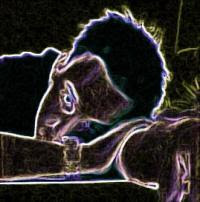Paint.NET
Some timeago I reviewed an application called GIMP (GNU Image Manipulation Program) as Iwas getting tired of using Photoshop for relatively simple image manipulationtasks. One cannot deny that Photoshop isan extremely competent and extensive program but it is also extremely resourcehungry and not to mention expensive; it seemed somewhat akin to using asledgehammer to squat a mosquito.
GIMP isideal for many home users as it is a small and free application which boasts alarge number of features that would probably prove sufficient for who needssomething slightly more than Microsoft Paint but less than Photoshop. My only reservation with the application wasthat the UI (User Interface) was a little bit inconsistent with the overallfeel of Windows and as a result it takes a while to get to grips with and oftenfeels alien to the average PC user.
This weekI stumbled across another very capable application called Paint.net which onceagain is free to download and use. Unfortunatelyit is not quite as powerful as GIMP but for most users this will be compensatedfor by the fact the interface will be extremely familiar to the average Windowsuser, to the point where it is almost intuitive, resulting in a much easierlearning curve. The majority of userswill find the features of Paint.net more than enough for day to day photomanipulation however also thrown in to the mix are a number of extremelypowerful tools.
First andforemost the application supports layers; unless you’ve ever used layers it’sdifficult to explain in words exactly what they are and how they can helpyou. The simplest analogy would be tothink of them as a number of transparency slides, which when all stacked andviewed together form the basis of a whole image. If you change one of the individual slidesthe overall image will look different, but no changes will be made to the otherslides. This means that changes that youmake to one layer which are later altered won’t result in a trial of obviousdamage to the image caused by previous alterations.
Anothernice feature is the way that the application handles multiple images; ratherthan having a number of windows that can be minimised and reopened as and whennecessary, Paint.NET has a clever style of tabbed interface. In order to navigate between open files yousimply click a thumbnail of the image from a scrollable selection on the topright hand side of the screen.
Additionalfeatures, updates and bug fixes are released on practically a monthly basis andthere is an active forum that offers a number of plug-ins, should you requireany extra functionality that isn’t provided as standard.
In termsof special effects, the application has a large number built in as standard;ink sketch, oil painting, blurs, distortions, noise control, red eye removal,sharpening, softening and so on. Theimage can also be manipulated by way of adjustments such as hue, saturation,level, brightness, contrast and sepia controls. The standard drawing and selection tools are provided and of course theintensity, tolerance or size of these tools can all be easily adjusted asnecessary.
Oneselling point of GIMP was that it is cross platform compatible howeverPaint.NET can only be used in Windows and more specifically in the laterversions, either XP or Vista. This isunlikely to be a problem for most my readers so if you found GIMP a littleconfusing and don’t have the time, patience or money for Photoshop then I wouldurge you download this tiny 1.6mb application by visiting www.getpaint.net.

0 comments:
Post a Comment